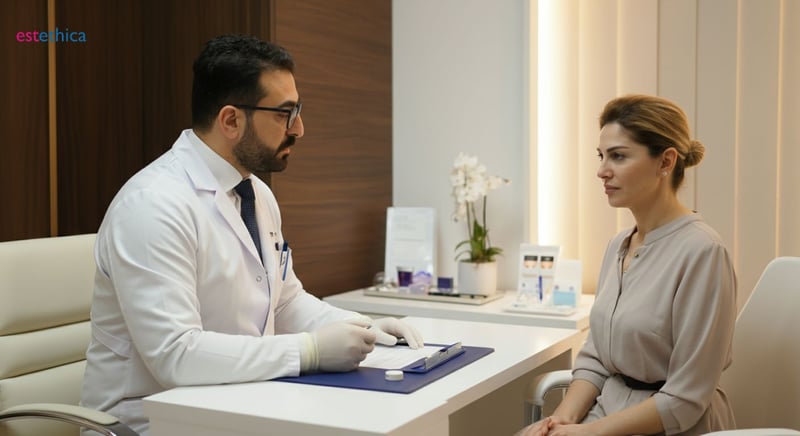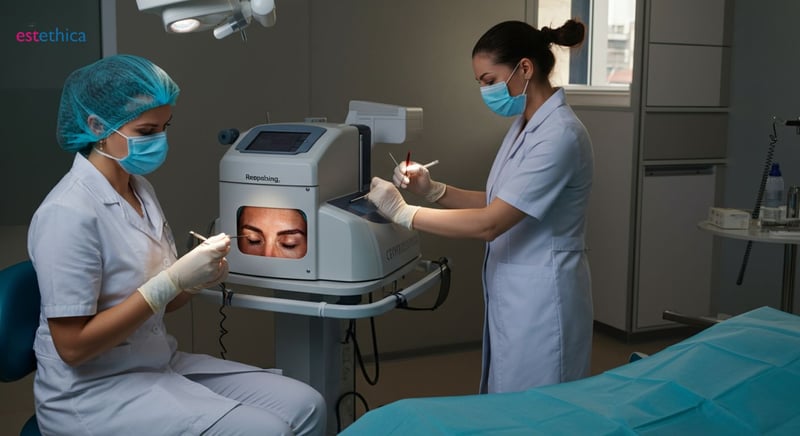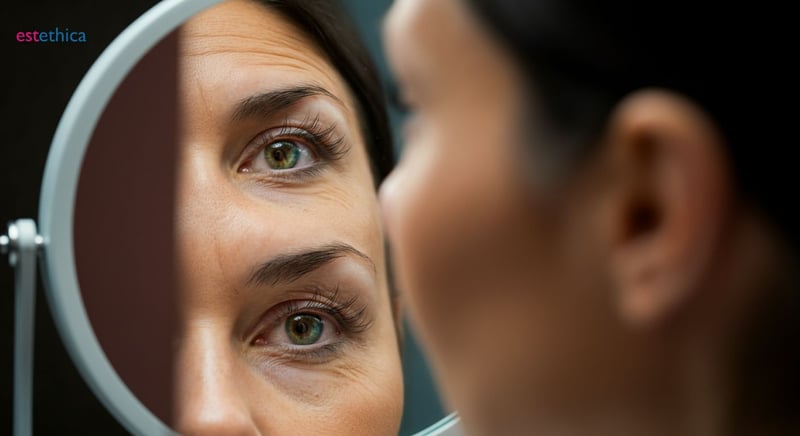Blepharoplasty: Transform Your Eyes with Confidence
Transform your eyes with confidence through blepharoplasty; learn everything you need about this life-changing procedure.
Blepharoplasty, also known as eyelid surgery, is a popular cosmetic procedure aimed at rejuvenating the appearance of the eyes by removing excess skin, fat, and muscle from the eyelids. This procedure not only enhances the aesthetic appeal but also addresses any functional issues such as impaired vision due to droopy eyelids. In this comprehensive guide, we aim to inform you about the intricacies of blepharoplasty, from understanding the basics and benefits to recovery tips and choosing the right surgeon for your unique needs.
Understanding Blepharoplasty: What You Need to Know
Who Can Benefit from Blepharoplasty?
Blepharoplasty, often referred to as eyelid surgery, is ideal for individuals experiencing sagging eyelids, puffiness, or under-eye bags. These issues can make one appear older or more tired than they feel. Candidates typically include those over 35, though younger individuals with genetic predispositions may also benefit. For example, someone with naturally droopy eyelids might seek this procedure to enhance their appearance. Additionally, men are increasingly opting for blepharoplasty, with before and after results showing significant improvements in their facial aesthetics. Understanding the blepharoplasty NHS criteria can also guide those considering this surgery in the UK.
Potential Risks and Considerations
- Blepharoplasty, like any surgery, carries risks such as infection or scarring.
- Choosing a qualified surgeon is crucial to minimize complications.
- Post-surgery care is essential for optimal recovery and results.
Understanding these risks helps individuals make informed decisions about their cosmetic eye surgery journey.
Expected Outcomes and Recovery
- Initial swelling and bruising typically subside within two weeks.
- Patients often return to normal activities after a few weeks.
- Final results, revealing a rejuvenated appearance, are visible after a few months.
Recovery time varies, but most individuals find the transformation worth the wait. For those curious about non-surgical alternatives, a non-surgical eyelid lift might be considered, though results differ from traditional surgery.

Eyelid Surgery: A Step-by-Step Guide to the Procedure
Understanding the Surgical Process
Eyelid surgery, or blepharoplasty, is a meticulous procedure aimed at enhancing the appearance of the eyes. The process begins with careful planning and marking of incision sites along the natural eyelid creases. This ensures minimal visible scarring post-surgery. The surgeon then makes precise incisions to remove or reposition excess skin, fat, and muscle. This step is crucial for achieving a rejuvenated look, particularly in cases of upper eyelid surgery where droopiness is a concern. For lower eyelid surgery, the focus is often on reducing puffiness or under-eye bags.
Preparation and Recovery Tips
- Follow pre-surgery instructions, such as avoiding certain medications and smoking.
- Arrange for someone to drive you home post-surgery due to anesthesia effects.
- Prepare a recovery space with necessary supplies like cold compresses and prescribed medications.
Adhering to these guidelines can significantly enhance the recovery experience, reducing blepharoplasty recovery time and improving overall outcomes.
Factors Influencing the Cost of Eyelid Surgery
- Surgeon's expertise and reputation can impact the overall cost.
- Geographic location plays a role, with prices varying between cities like New York and Los Angeles.
- The complexity of the procedure, such as combining upper and lower eyelid surgery, affects pricing.
While the cost of eyelid surgery is a consideration, it is essential to prioritize the quality and safety of the procedure. Consulting with the best blepharoplasty surgeon can ensure satisfactory results and minimize risks.

Blepharoplasty Recovery: Tips for a Smooth Healing Process
Effective Strategies for Minimizing Swelling
Post-surgery recovery is as important as the procedure itself. Patients are advised to keep their head elevated, apply cold compresses, and meticulously follow aftercare instructions to minimize swelling and promote healing. Full recuperation might take a few weeks, but results start showing as early as the swelling subsides. Elevating the head while sleeping can significantly reduce swelling, as it prevents fluid accumulation around the eyes. Additionally, applying cold compresses intermittently during the first 48 hours can help constrict blood vessels, reducing bruising and swelling.
Understanding the Price of Recovery
- Investing time in proper aftercare ensures optimal healing and results.
- Following medical advice can prevent complications, saving on potential corrective procedures.
- Quality recovery aids, like specialized pillows, can enhance comfort and support healing.
While the financial cost of eyelid surgery is a consideration, the true value lies in the quality of recovery and the long-term satisfaction with the results. Prioritizing recovery can lead to a smoother healing process and more satisfactory outcomes.
- Start with gentle facial exercises to improve circulation and reduce stiffness.
- Maintain a balanced diet rich in vitamins to support tissue repair.
- Stay hydrated to help flush out toxins and reduce swelling.
These steps not only aid in recovery but also contribute to overall well-being, ensuring that the benefits of blepharoplasty are maximized. By focusing on these aspects, patients can enjoy a rejuvenated appearance with minimal downtime.

Choosing the Best Blepharoplasty Surgeon for Your Needs
Evaluating Surgeon Credentials and Experience
When selecting a surgeon for blepharoplasty, it's crucial to evaluate their credentials and experience. A board-certified surgeon with a specialization in cosmetic eye surgery ensures a higher standard of care. For instance, a surgeon with extensive experience in both upper and lower eyelid surgery can better address specific concerns like droopiness or puffiness. Additionally, reviewing a surgeon's portfolio of before and after photos can provide insight into their aesthetic style and skill level. This is particularly important for men considering blepharoplasty, as the approach may differ slightly to maintain masculine features.
Key Factors in Surgeon Selection
- Check for board certification and specialized training in blepharoplasty.
- Review patient testimonials and before-and-after galleries for quality assurance.
- Consider the surgeon's approach to post-operative care and follow-up.
These factors are essential in ensuring a safe procedure and satisfactory results. A surgeon who prioritizes patient education and aftercare can significantly enhance the overall experience.
- Schedule consultations with multiple surgeons to compare approaches and comfort levels.
- Discuss your aesthetic goals and any concerns during the consultation.
- Evaluate the surgeon's communication style and willingness to answer questions.
By following these steps, you can find a surgeon who aligns with your aesthetic goals and ensures a successful blepharoplasty experience. This careful selection process is vital for achieving the desired rejuvenated appearance while minimizing risks and complications.
Benefits and Risks of Blepharoplasty
Enhancing Aesthetics and Vision
Blepharoplasty, commonly known as eyelid surgery, offers significant aesthetic and functional benefits. By removing excess skin and fat, it can dramatically improve one's appearance, making the eyes look more youthful and alert. This cosmetic eye surgery is particularly beneficial for individuals with droopy eyelids that obscure vision. For instance, someone struggling with peripheral vision issues due to sagging skin can experience a noticeable improvement post-surgery. Additionally, the procedure often complements other facial treatments, enhancing overall facial harmony.
Understanding Potential Risks
- Scarring is a potential risk, though skilled surgeons minimize visibility.
- Asymmetry may occur, requiring careful surgical planning and execution.
- Temporary dry eyes or irritation can happen post-surgery.
Understanding these risks is crucial for setting realistic expectations. While complications are rare, being informed helps in making educated decisions about undergoing blepharoplasty. For those considering this procedure in the UK, understanding the blepharoplasty NHS criteria can provide additional guidance. Moreover, exploring options like non-surgical eyelid lifts might be beneficial for those hesitant about surgery.
- Consult with a qualified surgeon to discuss potential outcomes and risks.
- Review before-and-after photos to understand possible results.
- Consider personal goals and health conditions before proceeding.
These steps ensure that individuals are well-prepared and informed, maximizing the benefits of blepharoplasty while minimizing potential risks. By carefully weighing the pros and cons, patients can achieve a rejuvenated appearance with confidence.
Trending Alternatives: Non-Surgical Options
Exploring Non-Invasive Eyelid Enhancements
For those hesitant about surgery, non-invasive treatments such as laser therapy, fillers, or botox offer less permanent but significant improvements in eyelid aesthetics. These alternatives help gauge what suits best before committing to surgery. Laser therapy, for instance, can tighten the skin around the eyes, reducing sagging without the need for incisions. Fillers can address volume loss, providing a subtle lift and smoothing out fine lines. Botox, on the other hand, temporarily relaxes muscles to minimize wrinkles, offering a refreshed appearance.
Understanding the Value of Non-Surgical Options
- Non-surgical treatments typically require minimal downtime, allowing for quick recovery.
- These procedures are often more affordable than traditional eyelid surgery.
- Results can be adjusted or reversed, offering flexibility in achieving desired outcomes.
While these options provide temporary results, they serve as an excellent way to explore aesthetic preferences without the commitment of surgery. This flexibility is particularly appealing for those considering blepharoplasty but unsure about the permanence of surgical results.
- Consult with a qualified aesthetic professional to discuss non-surgical options.
- Evaluate the potential benefits and limitations of each treatment.
- Consider personal goals and lifestyle when choosing a non-invasive approach.
By exploring these alternatives, individuals can make informed decisions about their cosmetic journey, potentially leading to a more satisfying and personalized outcome. Non-surgical eyelid lifts are gaining popularity, offering a glimpse into the possibilities of cosmetic enhancement without the need for surgery.
Advanced Blepharoplasty Techniques for Enhanced Aesthetic Outcomes
Exemplary Blepharoplasty Process with Optimal Recovery Strategies
Frequently Asked Questions
What is blepharoplasty and who can benefit from it?
What does the eyelid surgery procedure involve?
How long is the blepharoplasty recovery time?
What are the potential risks associated with blepharoplasty?
Are there non-surgical alternatives to eyelid surgery?
Discover the Path to "Healthy Beauty" with estethica's Award-Winning Services. Call Now for Your Free Consultation!
📞 Speak with Our Experts Today!